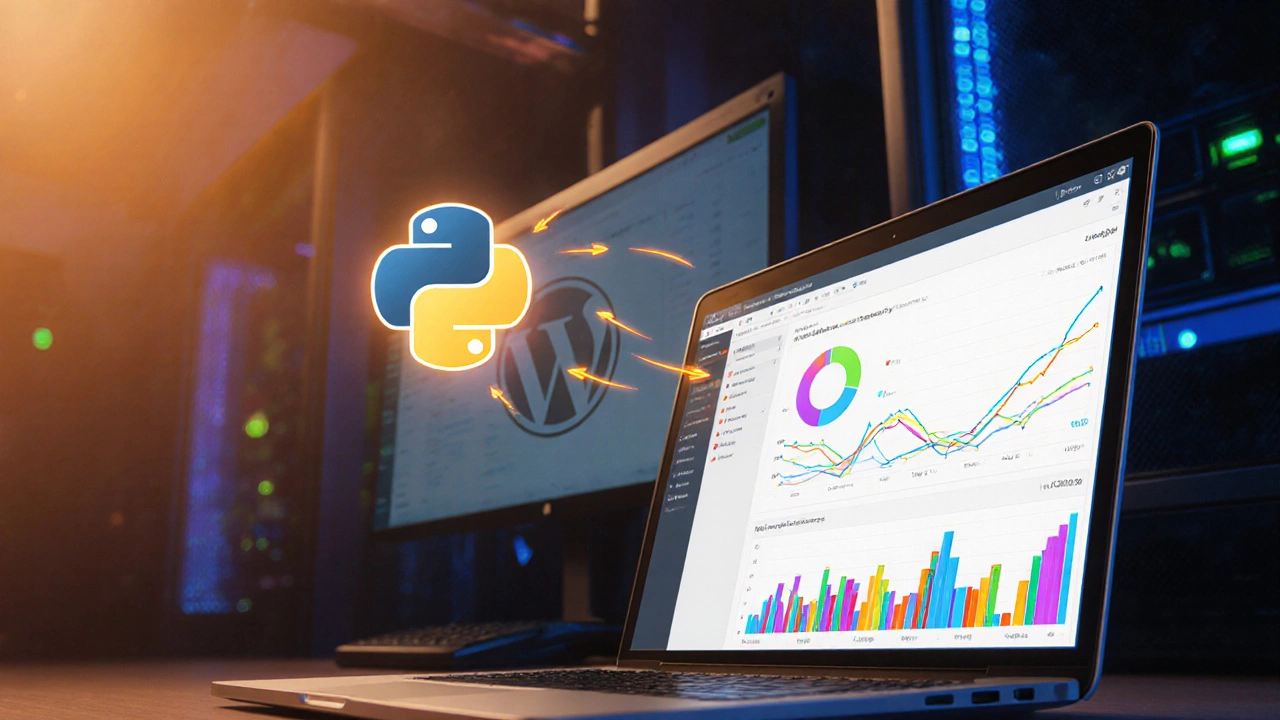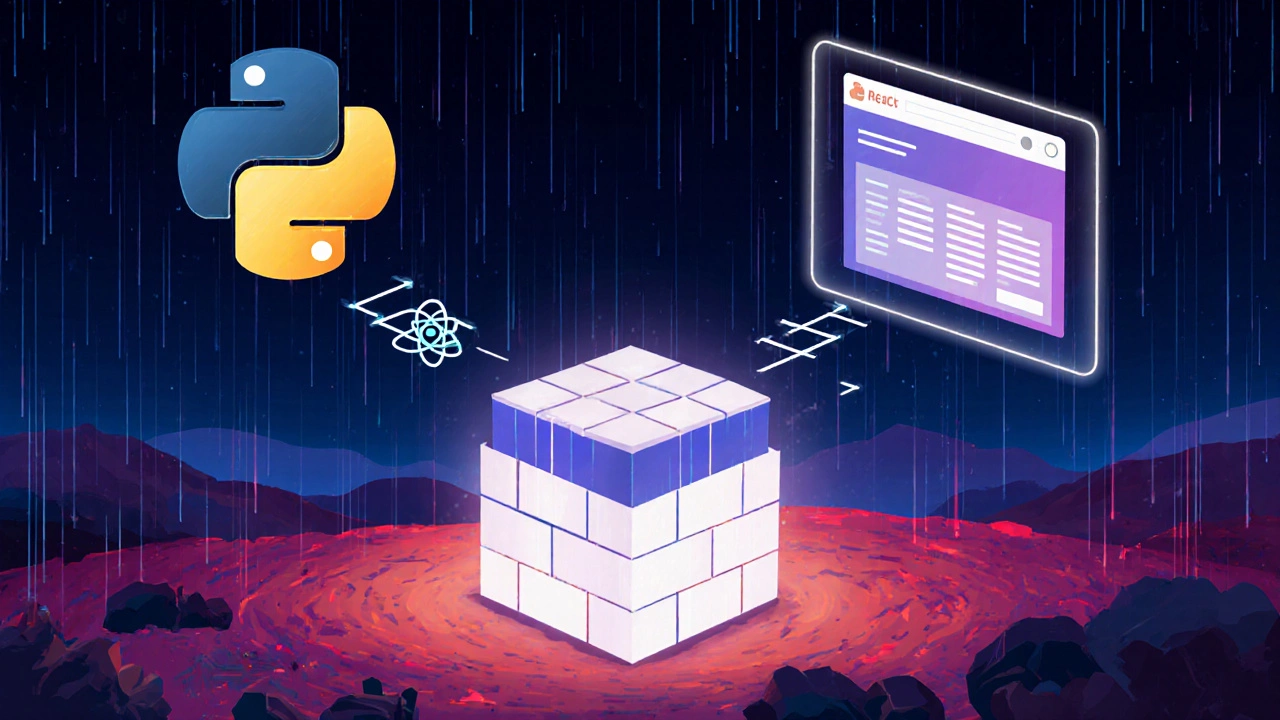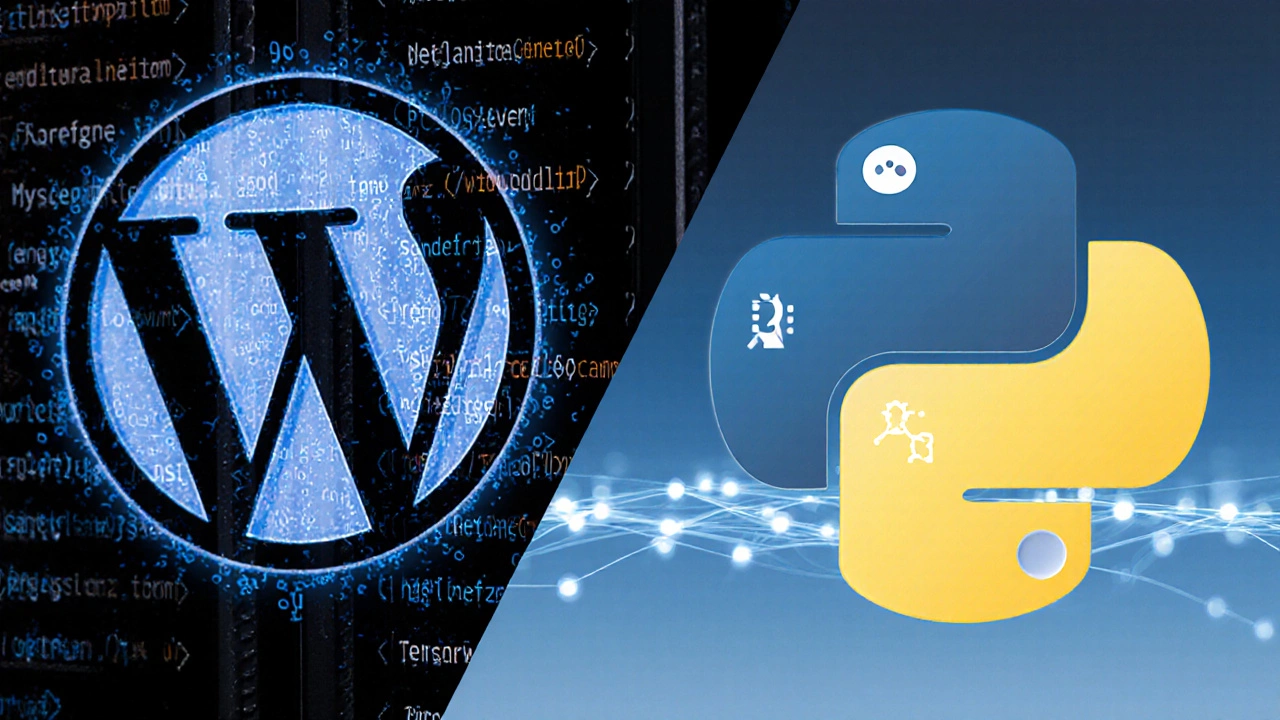WordPress Python Integration Checker
Does Your Project Need Python?
Answer these 5 questions based on your project requirements. The tool will analyze your needs and recommend whether Python integration would benefit your WordPress site.
Answer all questions to see results
When you hear WordPress is a popular PHP‑based content management system that powers more than 40% of the web, the first thing that comes to mind is PHP, MySQL and a whole load of themes. But what about Python is a high‑level, interpreted language known for its readability and strong ecosystem in data science, automation and web frameworks? Does a WordPress site ever need Python, or is it just a nice‑to‑have for niche projects? In this article we’ll untangle the myths, point out real‑world use cases, and give you a practical checklist to decide if Python belongs in your WordPress toolbox.
Why WordPress Doesn’t Need Python by Default
Out of the box, WordPress runs on a LAMP stack-Linux, Apache (or Nginx), MySQL, and PHP. All core features-theme rendering, plugin loading, REST API-are written in PHP. The platform’s plugin architecture expects PHP files, and the official documentation never mentions Python as a runtime requirement. That’s why most developers never install Python on a standard WordPress host.
But calling it a “need” would be misleading. WordPress is extensible enough that you can delegate certain tasks to external services written in any language, including Python. The key question is not "does WordPress need Python?" but rather "does your project benefit from a Python component?"
Real‑World Scenarios Where Python Adds Value
- Data‑heavy analytics: If you need to crunch large datasets (e‑commerce sales, event logs, SEO metrics) Python’s libraries-pandas, NumPy, scikit‑learn-are far more efficient than trying to do the same in PHP.
- Machine‑learning predictions: A recommendation engine for a WooCommerce store can be built with TensorFlow or PyTorch and exposed to WordPress via a REST endpoint.
- Automation and cron jobs: Complex scheduled tasks (image processing, API aggregations, backup routines) are easier to script in Python, especially when you use cron or WP‑CLI to trigger them.
- Headless WordPress setups: When WordPress serves only as a content backend and the front‑end is built with React, Vue or Next.js, Python micro‑services can handle authentication, caching or custom business logic.
- Legacy integrations: Some enterprise systems expose SOAP or proprietary APIs that have Python SDKs but lack PHP clients. Using Python as a bridge keeps the WordPress side simple.
In each of these cases Python isn’t replacing WordPress; it’s complementing it.
How to Wire Python Into a WordPress Site
- Identify the task that requires Python (e.g., generate a monthly sales report).
- Write a small Python script or Flask/Django micro‑service that performs the work and returns JSON.
- Deploy the script on the same server (if you have root access) or on a separate VM/containers such as Docker.
- Expose an endpoint-either a local
http://localhost:5000/reportor a public URL. - From WordPress, call the endpoint using
wp_remote_get()orwp_remote_post()(both in PHP). Parse the JSON and display it in a shortcode, Gutenberg block, or admin page. - Secure the communication: use API keys, OAuth, or server‑side IP whitelisting.
This pattern keeps WordPress’s core untouched while letting Python handle the heavy lifting.

Comparison: Python vs. PHP for WordPress‑Related Tasks
| Attribute | Python | PHP |
|---|---|---|
| Primary Role in WordPress | External service / data processor | Core language powering themes, plugins, core |
| Typical Use Cases | Analytics, ML, automation, API bridging | Content rendering, plugin logic, REST API |
| Integration Method | REST/JSON, command‑line, socket | Direct function calls, hooks, filters |
| Performance (CPU‑bound) | Often faster with NumPy/C extensions | Fast for typical web‑request cycles |
| Learning Curve for WordPress devs | Medium - new syntax, virtualenv | Low - already in the stack |
Notice the table highlights that Python shines when the job is data‑heavy or requires scientific libraries. For everything else-template rendering, user authentication, shortcode handling-PHP remains the most straightforward choice.
Common Pitfalls and How to Avoid Them
- Over‑engineering: Adding a Python micro‑service just to replace a simple PHP function adds latency and maintenance overhead.
- Version mismatch: Hosting providers often lock you into an outdated Python version. Use pyenv or Docker to guarantee consistency.
- Security gaps: Exposing a raw Flask endpoint can be risky. Always validate input, enforce HTTPS, and limit request size.
- Deployment friction: If your WordPress host doesn’t give SSH access, you’ll need a separate server or managed Python platform (e.g., Railway, Render).
- Data sync issues: When PHP and Python both write to the same MySQL tables, lock contention can arise. Prefer a single source of truth or use message queues (e.g., RabbitMQ) for async updates.

Quick Checklist: Do You Need Python with WordPress?
- Do you need heavy data processing, ML, or scientific calculations?
- Is there an existing Python library that solves the problem better than any PHP alternative?
- Do you have control over the server environment (root or container access)?
- Can you secure the communication channel between PHP and Python?
- Will the added complexity be justified by measurable performance or feature gains?
If you answered “yes” to at least three of these, start prototyping a Python service. Otherwise, keep it simple and stay within PHP.
Future Trends: WordPress, Python, and the Headless Revolution
Headless WordPress is gaining traction in 2025. Companies are decoupling the front‑end (React, Next.js, Svelte) from the back‑end, turning WordPress into a pure JSON API. In that architecture, Python often appears as a data‑orchestration layer, pulling from third‑party services, running AI inference, and feeding results back to the front‑end via the WordPress REST API.
Tools like WPGraphQL and WP‑CLI make it easier to script bulk operations. Meanwhile, the rise of server‑less platforms (AWS Lambda, Azure Functions) means you can write a Python function, deploy it without managing a server, and call it from WordPress with a simple HTTP request. The barrier to using Python is lower than ever.
Bottom Line
WordPress itself does not need Python to run. The core and most plugins live happily in PHP. However, when your project calls for data science, automation, or complex external integrations, Python becomes a powerful sidekick. By treating Python as a micro‑service rather than a replacement, you keep the WordPress ecosystem stable while unlocking capabilities that PHP alone can’t match.
Can I install Python plugins directly into WordPress?
No. WordPress only reads PHP files for plugins. To use Python you need a separate service or script that communicates via REST, WP‑CLI or a custom endpoint.
Is using Python slower than PHP for typical WordPress requests?
For standard page rendering, PHP is faster because it’s in‑process. Python adds a network round‑trip, so it’s only worth it when the Python task does heavy computation that would block PHP.
Do shared hosting providers support Python?
Some do, but many limit you to an older version. If you need a specific Python runtime, consider a VPS, Docker container, or a managed server‑less platform.
How do I secure the communication between WordPress and a Python service?
Use HTTPS, API keys or JWT tokens, and restrict the service to accept requests only from your WordPress server’s IP address.
What are good Python frameworks for building WordPress‑compatible services?
Flask is lightweight and perfect for single‑endpoint APIs. Django is overkill unless you need a full admin panel or ORM. Both can output JSON responses that WordPress can consume.
